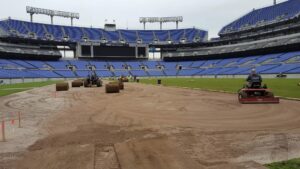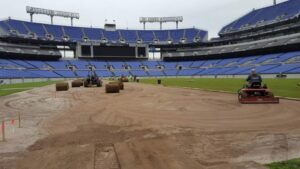Is there a place for seed treatments in grass markets? That was one of the questions posed during today’s Forage and Turf Crops Section meeting at the International Seed Federation’s World Seed Congress in Kraków, Poland.
“In the grass seed industry, I think seed treatments can help to improve what is already a great product,” said Stephen Alderton of DLF France SAS, who presented the topic. “It will have some real benefits and could really help consumers — whether they are a homeowner, a sports field manager or a farmer. He or she can get the grass established much quicker and reap some real quality benefits from the resulting grass sward.”
Alderton explained that treated seed establishes faster and better in harsher environments. “In tests, grass seed with a nitrogen fertilizer coating averaged 30 percent more plants emerging,” he said. “Even a year later, you could still see the difference between plots where the seed received no treatment and those where the seed was treated. The treatment gives a better root:shoot extension.”
At the moment, there are two main seed treatment options for grass seed. There’s a film coating option, which Alderton said doesn’t add much weight to the seed, and there’s a coating option, which adds significant weight to the seed. These seem to be the most popular methods right now to get active material closest to the seed, he said.
The global grass seed market is estimated to be 770,000 tons with the 28 nations of the European Union producing 200,000 tons and North America producing 370,000 tons. Others make up about 200,000 tons. Of this, about 50 percent is comprised of forage and 50 percent turf. To put this in perspective, Alderton said the U.S. wheat seed market alone is 1.5 million tons.
“The size of the market might be one area that’s hampering investment,” Alderton added. “Perhaps this is why we need some help with legislation, so that it reflects the size of the market and the types of investments we can put into it.
“One of the problems for our industry is that people think ‘it’s just grass,’” Alderton said, noting that some of the ways this perception might be changed is by reducing the cost, enhancing the image, increasing the yield, improving persistency and improving quality or trace elements.
“What we are selling is not a ‘gadget,’” Alderton emphasized. “It needs to work and be valuable to the user.”
With seed treatments, Alderton said his team regularly gets a 25 percent increase in establishment rates in the seedling stage, which is then transferred through to all the mature grasses. In terms of what the farmer will see, Alderton said it’s about 100 euros of increased return on his fields. “That’s quite significant compared to the investment,” he added.











